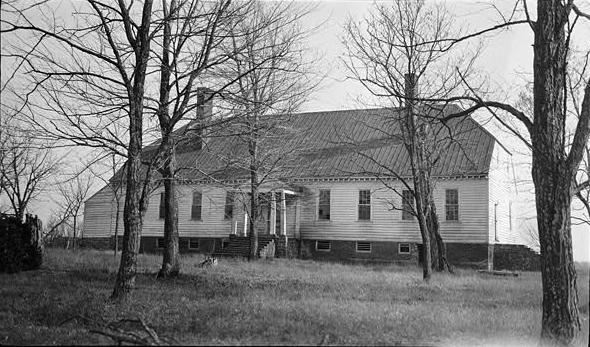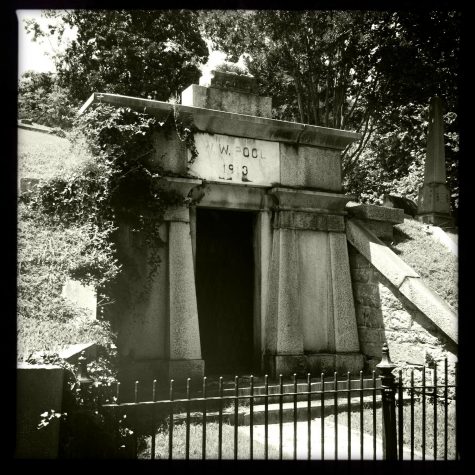The Urban Legends of Virginia

October 31, 2018
This Halloween, it’s time to take a look at three urban legends that spook the state that we call Virginia.
The Ghost of Sarah Shelton Patrick
Patrick Henry—a Founding Father and one of Virginia’s most esteemed historical figures—is remembered by the general populace mostly for his famous declaration, delivered during the Second Virginia Convention in 1775: “Give me liberty, or give me death!” Beyond that, however, his life tends to be largely overshadowed by those of his contemporaries. Certainly, few people, if asked randomly, would be able to tell you much of anything about him, and fewer people still would be able to tell you about his first wife, or the tragic details surrounding the final years of her own life.
Patrick Henry and Sarah Shelton were both young when they married each other in 1754, even by the standards of 18th century America—he was 18, and she, only 16. Despite initially struggling to support themselves, Henry eventually found success as a lawyer, and together, the two went on to have six children. After the birth of their last child in 1771, however, Sarah began to suffer from some form of mental illness that only worsened over time. Rather than send her to an asylum—which, at the time, was more akin to a prison than any sort of hospital—Henry elected to make a room for her in the cellar of their home, Scotchtown Plantation, where she spent the last few years of her life. It was there that she died (and was possibly buried) in 1775, the same year that her husband gave his famous speech.
Today, visitors to Scotchtown Plantation often claim to experience paranormal incidents, ranging from screams to apparitions of a woman in white, who lights candles in the windows as night falls. Reportedly, Patrick Henry’s own great-great-great granddaughter refused to spend a night in the house due to an “eerie, haunting presence”. As with most ghost stories, little in the way of actual, concrete evidence has been provided to support these claims, but you can always go to check the house out for yourself.
The Richmond Vampire

Richmond’s Hollywood Cemetery—so named for the numerous holly trees that grow around the area—deserves a visit for many reasons. The site is well known for both its natural and architectural beauty and its historical significance. In its roughly 170 years of operation, it has become the final resting place of U.S. Presidents James Monroe and John Tyler, as well as six Virginia governors, two Supreme Court justices, and countless members of the Richmond community. According to legend, it may also host a vampire.
On Oct. 2, 1925, the Chesapeake and Ohio Railroad’s Church Hill Tunnel collapsed, burying several workers alive. This was when the Richmond Vampire supposedly made its first appearance. As the myth goes, a bloody, man-like creature with torn, hanging skin and jagged teeth crawled out from the cave-in, and fled towards the Hollywood Cemetery after being spotted by a rescue team. Some of the men there took chase to it, and followed it until it disappeared within the mausoleum of W.W. Pool.
If there’s any truth behind this story, it’s almost as horrific as the tale itself. It’s been suggested that the figure believed to be the Richmond Vampire was not a monster, but himself* a victim of the disaster: a 28-year-old railroad fireman named Benjamin F. Mosby. At the time of the collapse, Mosby had been shoveling coal into the firebox of a steam locomotive until its boiler ruptured. Though he managed to escape the tunnel, he was left with severe injuries—most notably, broken teeth and terrible burns all over his upper body, which were so bad that layers of his skin were hanging off in places. Mosby would die of these injuries only hours later in Grace Hospital, and was buried in Hollywood Cemetery.
The Bunny Man

Of all of Virginia’s urban legends, that of the Bunny Man easily possesses the greatest notoriety. A large part of the fascination that
surrounds this story within our very own community is due to proximity, and almost pride—
more so than any other urban legend, the Bunny Man belongs to Fairfax County. While there are many different iterations of the legend, all prominently feature areas and landmarks well known to locals, with one in particular boasting the honor of forming its all-important setting: the Colchester Overpass, otherwise known as “the Bunny Man Bridge”.
The tale of the Bunny Man has been around almost 50 years now, first gaining attention in the early 1970s. Since then it has been told and retold, changing a little bit each time, but most versions go something like this:
In the early 20th century, a group of inmates were being shuttled to the now-closed Lorton Reformatory from an insane asylum deep in the woods that separated the town of Clifton and Fairfax Station. At some point on the way there, the bus crashed, releasing the convicts into the woods. All were found and recaptured by the authorities, except for one: Douglas Grifon. The only trace of him was a trail of “half-eaten, gutted bunnies”, many of which discovered dangling from the Colchester Overpass. Years later, a group of teenagers were hanging out in the same area on Halloween when they were attacked at midnight. Their corpses were discovered the next morning, gutted and dangling from the bridge just as the rabbits had been.
It’s a frightening tale, to be sure (or perhaps a silly one, if you don’t put much stock in such things). Again, there are many different versions; some say that another convict escaped alongside Grifon, and that the second fellow was the one found gutted and hanging from the bridge, rather than the teenagers. Others say that Grifon was found and cornered by authorities, but was struck by a passing train before they could capture him (with his ghost being responsible for any attacks afterwards). Still others go so far as to provide an origin story for Grifon, who supposedly went mad on Easter Sunday and murdered his wife and children. One element remains the same across all versions, however. Each makes it clear that if you find yourself under the Bunny Man Bridge at midnight on Halloween, you too will have an unfortunate encounter with the murderous, possibly-ghostly killer himself.
Chilling stuff, right? The only question is, how much of this is real, and how much of it is complete nonsense?
Honestly, while much of the urban legend is easily proven to be just that—an urban legend—there is a kernel of truth behind the Bunny Man. There was never a mental institution in the area, of course, and given the vague timing of the story, there’s a good chance that the Lorton Reformatory hadn’t even opened yet (only doing so officially in 1916). Additionally, no Fairfax court records exist of Douglas Grifon or of any crimes he supposedly committed, and of the two incidents that may lend some veracity to the tale, neither of which actually take place at Bunny Man Bridge. But—that being said—there were two incidents, and, if not bloodcurdling, they were definitely bizarre.
The first incident occurred on October 18, 1970, and was actually reported by The Washington Post. According to the story, Air Force Academy cadet Robert Bennett and his fiancee were sitting in a car around midnight on the 5400 block of Guinea Road, near the home of Bennett’s aunt and uncle, when “a man dressed in a white suit with long bunny ears appeared”. After yelling at the couple and telling them that they were on private property, he threw a wood-handled hatchet through the front car window. While obviously shaken after such an event, neither Bennett nor his fiancee were injured, though Bennett’s aunt had to brush glass from the shattered window out of the latter’s hair.
The second incident happened only two weeks later, when private security guard Paul Phillips saw a similar figure standing on the porch of a new, but unoccupied house. This figure, described as a male in his late teens or early 20s, also carried an ax, and started to warn away Phillips by saying, “All you people trespass around here. If you don’t get out of here, I’m going to bust you on the hand.”
That was the last time anyone has seen such a person, and to this day no one knows who he was or, for that matter, why he wanted to dress as a rabbit and threaten people with an ax. And while this man is maybe not quite as frightening or as interesting as the legendary killer he serves as the inspiration for, you have to admit, his own story is no less baffling.


